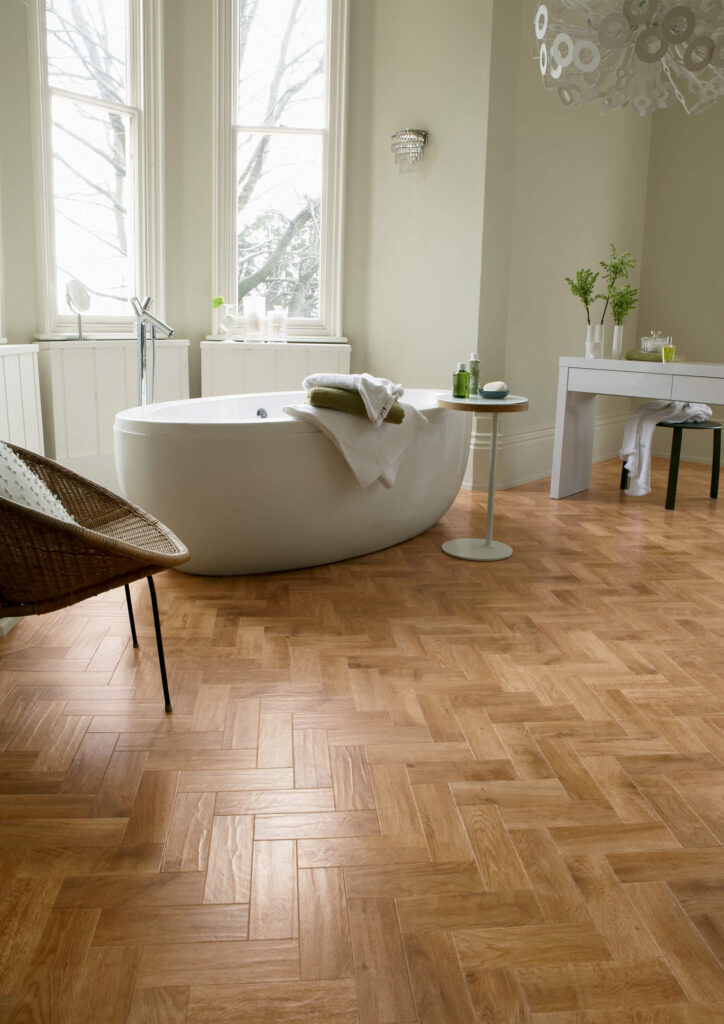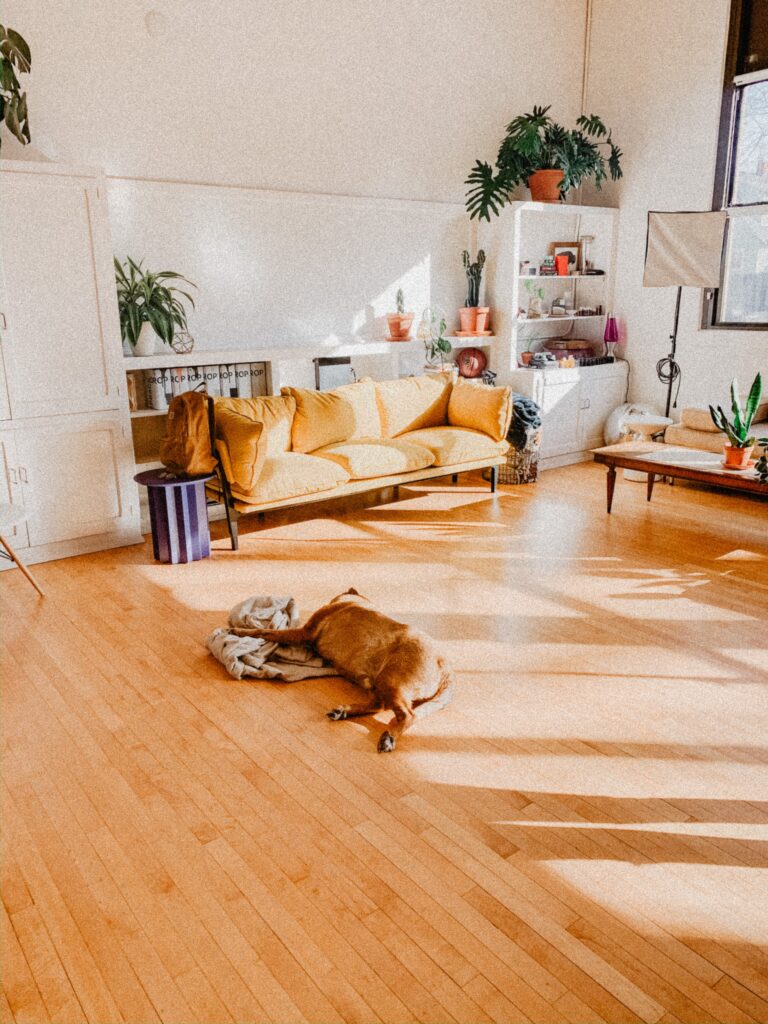


Vinyl Flooring Installation
Vinyl flooring has evolved from the sheet vinyl in the kitchens of our youth. It’s come such a long way, in fact, that homeowners may not even recognize it. It’s time to give this versatile flooring option a second look. Here’s why.
Hardcore Distinctions: WPC vs. SPC
There are two primary types of cores used to create rigid vinyl flooring. And the different way they’re constructed gives each one its own unique benefits which make it better suited than the other for particular applications.
One is WPC, or wood plastic composite. In its simplest terms, WPC is a combination of wood flour (very fine sawdust) or wood-like materials, fiber, a thermoplastic resin and a foaming agent. The resulting core is relatively thick, due to the foaming agent, and yields a rigid vinyl plank or tile with good sound absorption qualities, more resilience or give underfoot for better comfort when standing on it for long periods, and more warmth.
The other is SPC, which is stone plastic composite. It features a high percentage of limestone (calcium carbonate) dust with polyvinyl chloride and plasticizers. This produces a thin, dense core that is hard with little resilience, which makes it highly resistant to dents, but not as comfortable to stand on. It is also unaffected by extreme variations in temperature, although it does conduct cold easily.
Core Considerations: A Decision Guide
One of the key points in evaluating which type of core to select for different applications is to separate what traits are common and those that are different across the board with rigid vinyl regardless of core choice.
Waterproof. Both WPC and SPC cores are considered waterproof in handling everyday spills and moisture, making them ideal for rooms where moisture looms such as bathrooms, kitchens and laundry rooms. Just note that neither is designed to be submerged in water.
Thickness. WPC floors, with their added fillers, is usually the thicker product. It tends to be five to eight millimeters thick, while SPC floors fall between three and a half to seven millimeters.
Durability. The toughness of the rigid vinyl’s wear layer determines its resistance to scratches and scuffs. In terms of stability and resistance to dents from heavy furniture or equipment, an SPC core has an edge, especially in commercial environments in applications where the flooring will be exposed to a lot of direct sunlight and/or extreme temperatures. However, rigid vinyl with a WPC core is more than durable enough for most residential uses.
Comfort. With its sound absorbing qualities, warmth and comfort underfoot (especially in spaces where people often stand for extended periods, such as the kitchen), the advantage goes to a WPC core.
Beauty. The printed layers’ realism and variety of elemental looks made possible by today’s advanced imaging and embossing technologies help create absolutely stunning floors, regardless of the core used.
Luxury Vinyl Planks and Tiles
Luxury vinyl planks are created in the same way as luxury vinyl tile, but they come in long, rectangular planks. The embossing techniques are similar regardless of which luxury vinyl flooring type your clients prefer.
Luxury vinyl tile and planks have the benefit of being resilient and hard-working, making each a practical solution for high-traffic areas. They also tend to be less expensive to purchase and install than hardwood flooring.
Kitchens, bathrooms, and entryways make excellent locations for luxury vinyl tile or planks. These flooring materials are waterproof, making them an ideal choice for these and other moisture-prone spaces. Additionally, they’re easy to keep clean, which is a bonus for homeowners who don’t want high-maintenance floors.









